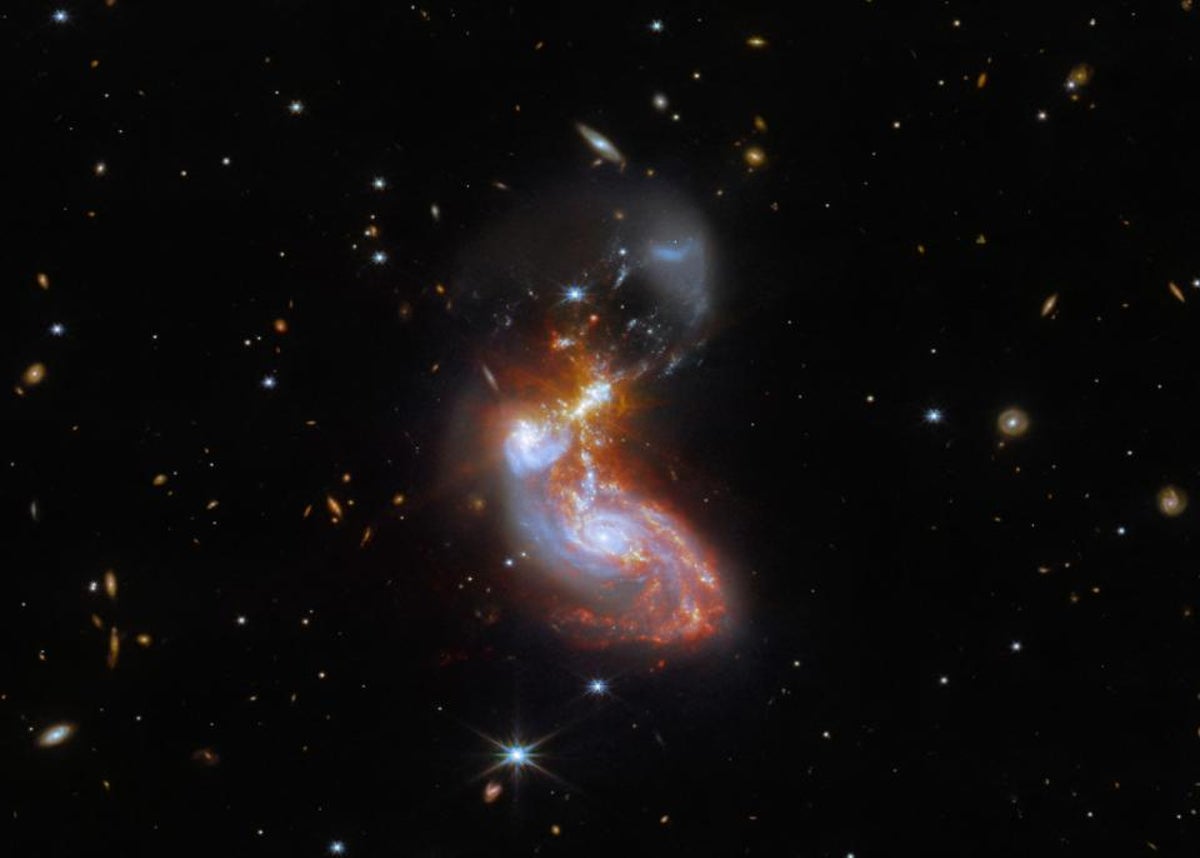“Exploring Cosmic Mysteries: How NASA’s Webb Telescope is Shedding Light on Colliding Galaxies’ Energy Sources”
Astronomers have identified the precise location of the powerful energy source behind a glowing merging galaxy hundreds of millions of light-years away.
The main energy source behind this colliding galaxy IIZw096 – located about 500 million light-years away near the constellation Delphinus – had been shrouded in cosmic dust, say researchers including those from the University of Hiroshima in Japan.
While the energy source was first identified about a decade ago, scientists using the more advanced James Webb Space Telescope have now pinpointed the exact location of what they call the merging galaxy’s “engine”.
The results recently published in the The Letters of the Astrophysical Journal, find out where most of the visible radiation from the colliding system exits.
“The James Webb Space Telescope has brought us completely new views of the Universe thanks to the highest spatial resolution and sensitivity in the infrared region,” said Hanae Inami, corresponding author of the study.
“We wanted to find the ‘engine’ that powers this merging galaxy system. We knew this source was deeply hidden by cosmic dust, so we couldn’t use visible or ultraviolet light to find it,” explained Dr. inami
But observing the mid-infrared emission from these merging galaxies with the Webb telescope, scientists have found that this “engine” behind the collision “outshines everything else.”
When galaxies collide, their constituent stars, planets, and other celestial bodies collide, but these cosmic collisions emit only infrared radiation, which has longer wavelengths than light visible to humans.
In previous studies in 2010 with the Spitzer Space Telescope, astronomers were unable to pinpoint the exact location of the main source — the thruster — of the radiation due to the telescope’s limited resolution.
With the Webb telescope, however, they found that this engine is responsible for the majority of mid-infrared emissions, which account for up to 70 percent of the system’s total infrared emission.
Astronomers have also been able to determine that this energy source has a relatively very small radius of no more than 570 light-years – just a tiny fraction of the colliding system, which spans 65,000 light-years.
Scientists liken this ratio to “a peppercorn on the white of a fried egg”.
“It is intriguing that this compact source, far from the galactic centers, dominates the system’s infrared luminosity,” said Thomas Bohn, another co-author of the study.
The results also show the Webb telescope’s potential to open the door to identifying heavily dust-shrouded cosmic energy sources, researchers say.
“Future planned spectroscopic observations of IIZw096 will provide additional information on the nature of the dust, ionized gas and warm molecular gas in and around the disturbed region of this luminous merging galaxy,” added Dr. Inami added.
Don’t miss interesting posts on Famousbio










